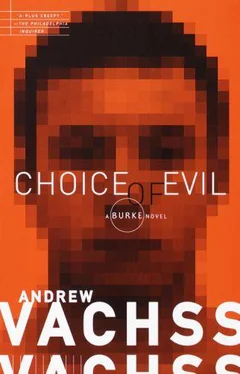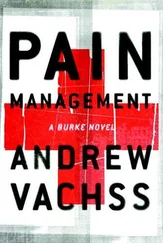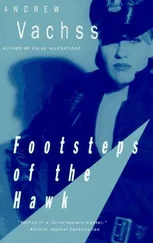“Some people. . . some gay people. . . they hired me to reach out to him. See if he needed any help. Getting away, I mean.”
“And you were willing to do that?”
“I’m trying to find whoever killed Crystal Beth,” I told her. “And maybe he’s the path.”
“Yeah. Okay. I mean, I’m no serial-killer groupie but. . . I mean, it’s not like he’s killing kids or anything. Everyone knows how you’d feel about that.”
Her face was a study in repose, brown eyes alive but calm. And right then I knew. Xyla was slicker than the killer thought. And, somehow, she’d read his damn messages too.
I didn’t say anything.
Xyla swept into the room. Trixie and Rusty backed away.
“Ready to have your look?” Xyla asked, so upbeat and innocent.
“Sure,” I told her.
The following morning, it was time for the next phase of the operation. Again telling Zoë that I would be making a call from outside, I simply went upstairs and activated the staged sequence in the computer with the “contact-target” command. Within minutes, a call would be placed to the subject’s home. Whether picked up by an answering machine or a person, I was reasonably confident that it would be recorded. The digitized paste-up was ready to send, one of a menu of choices available to me telephonically via button-sequence selection. As the target had indicated compliance via the newspaper ad, I was able to proceed to the next step without the annoying game-playing that sometimes results when the target’s response is placed other than as precisely directed.
When the phone was answered at the target’s home, the following message would come across the line:
Thank you for your cooperation. If you wish proof of the child’s health and safety, please so indicate by affixing a piece of *red* material to the flagpole in front of your residence. This may be an object of clothing, a scrap of cloth. . . anything at all, so long as it is unmistakably red. As soon as we observe this, we will prepare and transmit the appropriate proof.
There is an element of bluff—and, thus, of chance—in all operations. Requiring the target to attach a piece of red material to the flagpole in front of their house is a classic example. Certainly, I was aware of the flagpole. Now was the time to balance the value of instilling the belief that they were under constant observation against the risk of revealing the somewhat mechanized nature of my contact systems. Restated: I would necessarily assume that they would, indeed, attach the red material, and act as if that were a fact. If I was correct in my assumption, it would exacerbate their sense of being under observation. . . and increase my safety by decreasing their willingness to participate in any law-enforcement exercise designed to ensnare me. However, if they refused (or were unable) to attach the material and I sent the promised proof anyway, it would surely disclose that they were *not* under active surveillance, threatening the credibility of my entire presentation to date.
Although not given to introspection, I do understand that my exercises contain an element not purely intellectual. That is, the intellectual portion is *reduction* of risk. But were I able to eliminate *all* risk, my art would be truly completed and any repetition thereof utterly banal and meaningless. Were I ever to achieve perfection, I would cease at the apex.
Downstairs again, I found the child wearing some sort of coveralls, busily engaged in cleaning the kitchen area.
“Did you call them?” she asked by way of greeting.
“I did.”
“Did they say anything?”
“I would have no way of knowing, child. It was a one-way conversation. Remember? I explained how it worked.”
“Oh. I didn’t know you did that for all the. . . phone calls. Just maybe for the first one.”
“No. In fact, I will never actually speak to. . . the people.”
“What people?”
“Whoever your parents designate to act for them. Sometimes, the parents have. . . difficulty in dealing with the emotional stress of the situation, and they have others act for them.”
“Like the police?”
“That is the most likely.”
“My father won’t do that,” the child said. Not smugly, but with clear assurance.
I did not pursue the matter. Although the child seemed far too clever to be deceived about her father’s actual occupation—he is listed as the owner of a waste-removal firm in the business directory—there was no point in providing her with the information known to me.
“Do you want to help me make a film, Zoë?” I asked instead.
“Like a movie?”
“Somewhat. Actually, it’s a videotape. You see that equipment over there? In the corner?”
“Yes. I saw it before. We have that too.”
“In your house?”
“Yes.”
“For surveillance?”
“I don’t know. What’s. . . surveillance?”
“Like the cameras they have in banks. To watch people who come on the premises.”
“Oh. I don’t know if we have those. My father has a camera. In the basement, just like this.”
“Like this basement?”
“No. Never mind.”
As this was a time when maximum participation was required, I again bowed to the child’s “Never mind” trademark. “What we have to do is make a short tape, Zoë. So everyone can see you are alive and well. Do you want to help?”
“Sure!”
“All right. But we’re going to have to play a trick on. . . the people who see the tape. Are you willing to help with that too?”
“What kind of trick?”
“Well, the only way to get the tape to them is to mail it. That takes two or three days. But it will take almost a whole day for me to go away and mail it. If I mailed it from around here, they would know we are close by.”
“And we don’t want that?”
“No. Certainly not. The further away they believe us to be, the better. And if the date is. . . advanced. . . they will believe it was mailed immediately after it was made, do you understand?”
“You mean, like, pretend it’s already tomorrow?”
“Precisely. Can you do that?”
“That’s easy. What else do I have to do?”
“Just say hello. Tell them you’re fine, and nobody has harmed you. That you want to come home, and to please do whatever ‘they’ say.”
“ ‘They’?”
“Yes, Zoë. It is much safer for me if the. . . if your parents and whoever is helping them believe there is more than one person involved in. . . this.”
“Okay. I get it.”
“There’s nothing to be nervous about, child. We can try it as many times as you like until we get it just right.”
“I’ll get it right the first time,” she said confidently.
As it developed, her confidence was neither misplaced nor overstated. At the first take, the child looked directly into the camera and said:
“Hi! It’s me, Angelique. I’m fine. Everybody is being very nice to me here. It’s Saturday morning and I just watched my show. You have to do everything they say, okay? Bye!”
“That was excellent!” I complimented her. “Now we must prepare the package.”
“How do we do that?”
“Well, the most important thing is to leave no forensic traces.”
“What’s ‘forensic’?”
“Something that could be used as evidence. Say, a fingerprint, or a drop of perspiration. . . That’s why I always work under absolutely sterile conditions,” I told her, holding up my surgical-glove-covered hands for emphasis. “But an equally important part of presentation is misdirection. Do you know what that is, Zoë?”
“Like magic tricks?”
Again, I was brought up short by the child’s fund of knowledge. Or was I making unwarranted assumptions? “What do you mean?” I asked her, in order to determine.
Читать дальше











